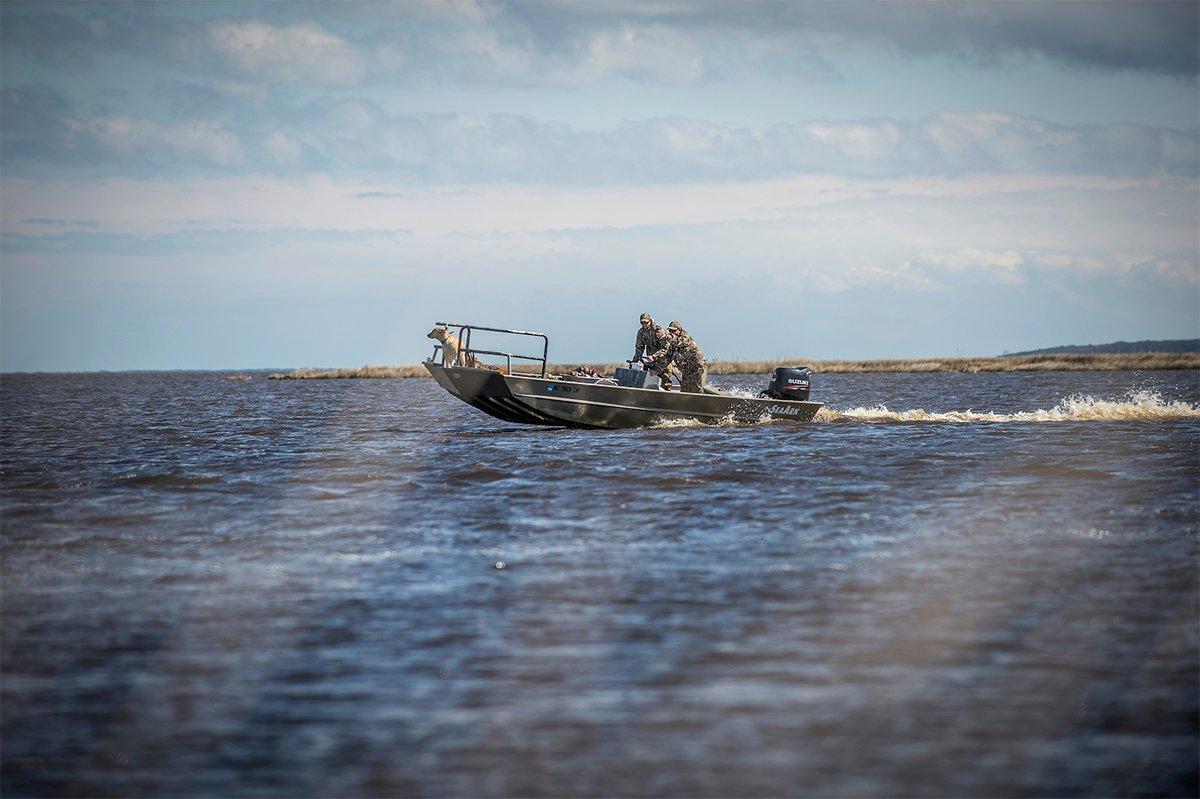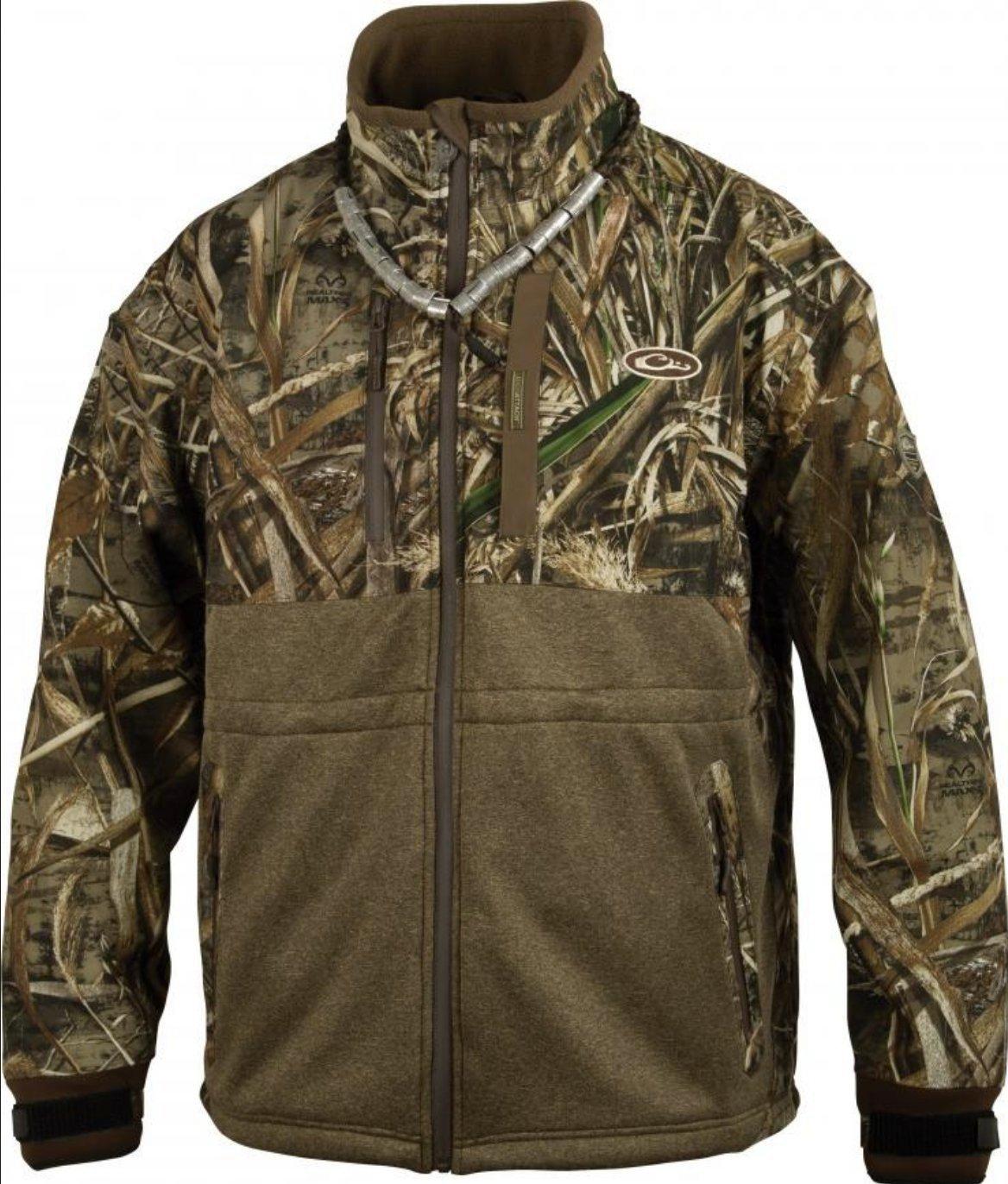Pland and Prepare to Navigate Wide-Open Seas
Hunting diving ducks can provide unparalleled thrills and excitement, but after a while, most up-and-coming diver nuts have an epiphany: Those birds are built for big, open water, and that's where they spend most of their time.
No worries. Where legal, some hardcore guys — OK, nuts — take the game to those ducks, setting up large decoy spreads far from shore to attract big-water canvasbacks, bluebills, redheads and others. At face value, this type of hunting seems pretty straightforward. But as you delve into its complexities, you soon realize open-water diver hunting is a different game — a genre dissimilar to the water and timber hunts most folks enjoy.
Don't be intimidated. If you can drive a boat, shoot a shotgun and read a weather report, you can hunt big-water divers on their turf. Here are some basic dos and don'ts to get you started.
Don't: Skimp on Safety
Here comes the boring safety lecture, but you need to hear it. Open-water hunting can be extremely dangerous. It almost killed me 29 years ago, and I've heard and read too many similar stories since then. Big water is always treacherous, but it's especially so in fall and winter, when weather can change on a dime and building waves might spell disaster — especially because they'll be few other boats on the water to help you.
Safety should be your No. 1 priority when heading off-shore. Use a large, sound, stable boat with the most powerful motor it can handle and, preferably, a back-up motor. Never overload your boat with hunters, decoys or gear. Always make sure every piece of marine gear — radios, lights, batteries, spotlights, bilge pumps and especially your motors — functions flawlessly.
Always wear your life jackets. Full flotation suits are better. Tell someone where you're going and when you expect to return. If there's even a hint of bad weather or unmanageable waves, postpone your trip. No duck is worth your life.
Guardian Elite Eqwader Full Zip Jacket by Drake Waterfowl Systems in Realtree MAX-5
Do: Go Low-Profile
There's no cover in open water, so you have to hide in plain sight. The best way to do this is by reducing or eliminating your profile. Many big-water guys use specially designed layout boats, which sit almost flat to the water line and keep you hidden from low-flying divers. Plus, they let you hunt amid your decoy spread, providing close-up action.
Even hunters in large boats can boost their odds by staying low. Eschew large, tall boat blinds, which look like gargantuan floating corks. Pressured divers avoid these. Instead, sit low in your boat to reduce your profile. Also, rather than setting up upwind of your decoys, as is traditional, anchor the boat to one side of your spread (preferably with the sun at your back) so approaching birds aren't looking directly at you. You'll still enjoy good crossing shots.
Do: Use Multiple-Decoy Lines
Picking up 100 decoys anywhere is a chore. Lugging 100 single-lined decoys from a motorboat in a steady chop equals misery and takes forever. Be efficient, and use multiple-decoy setups, whether commercial or homemade. These setups use a long mother line to which you attach several decoys via a leader and a clip (often a lobster clip).
Set up lines so you can transport as many decoys as your boat will safely haul. You won't need quite as many blocks as when shore hunting, but you'll want at least four dozen, strung on four lines. Five or six dozen, rigged on as many lines, are preferable. Store your pre-rigged long lines along the rails and deck of your boat, or coil them into large lawn bags. The key is making sure the decoys and mother lines don't tangle. It helps to use heavy-gauge rope for your mother line.
Don't: Worry as Much About Decoy Configuration
Shoreline or sandbar diver setups can be pretty elaborate. You don't need that in open water. If fact, it's best to avoid any decoy configuration that makes for difficult setup and retrieval in a boat. Further, placing blocks at an angle or, worse, perpendicular to your boat or layout boat will cause lines to bow, drift and possibly tangle.
If you're using multiple-decoy lines, get your boat upwind of the layout or where you intend to set up, and then drift or motor with the wind while other passengers throw the mother-line anchor and then toss decoys overboard one by one, forming a straight line. When you've thrown the last decoy in the string, drag the line to its appropriate spot. Keep the string taut, and then drop the downwind anchor. Repeat that process for subsequent lines.
My favorite layout spread features two lines of decoys to the right of the boat (assuming most shooters are right-handed), with the inside line extending a bit upwind of the boat to hide it. Then, leave a good-sized gap to the left of the boat — think landing area — and run four strings of decoys on that side. Start the inside line at or slightly upwind of the boat, and then stagger subsequent strings downwind a yard or two. This breaks up the blocky appearance of straight lines a bit. If it's calm or birds seem spooky, consider placing a few singles in the open pocket in front of the layout boat, behind the spread or outside the lines.
Do: Bring Lots of Shells
Good days on open water bring lots of action. And although birds might be in your kill hole with their feet down, they're still divers and will hit the afterburners and instantly be 6 feet beyond your shot string. Further, you'll be shooting from a layout boat or hunkered in a larger craft, so you can't position your feet or weight ideally for precision wing-shooting. That's a simple way of saying you might miss a lot.
So, bring more shells than you might like to admit you need. If you don't fire them, great. But they'll be there if you need them. Further, remember that crippled divers have a nasty habit of … well, diving. And on big water, they can escape quickly. You'll want lots of shells to dispatch wounded birds quickly. Consider taking a second box of swatter loads with heavy payloads of smaller shot, which give you better odds of a headshot on a swimming bird.
Don't: Hunt the Bedroom
I learned this the hard way early in my diver career. Friends and I spotted a large oil slick of bluebills on a local lake and set out to hunt them the next evening. And it was epic — for one day. After that, the ducks found other areas to spend the night. We'd made the classic mistake of blowing up a roost.
It's much more productive to determine how and where divers travel between roosting and feeding areas. Often, these trading routes are fairly consistent, especially during steady weather conditions or when birds are using a central feeding area.
The beauty of open-water hunting is that you don't have to be precisely on the X. Sure, you want to be as close as possible, but you can still be off by 100 yards or more and attract traveling birds with your decoys.
One more note: Scout constantly to note changes in feeding, roosting or travel areas. On large bodies of water, divers can roost almost anywhere, and they'll move around in response to boating and hunting pressure. Stay on them to keep in the game.
Do: Learn to Identify Divers Quickly
In pictures or during sunny days, divers are fairly easy to identify. And honestly, it's pretty tough to mistake a bufflehead, goldeneye or canvasback for anything else. But mid-sized pochards — scaup, redheads and ringnecks— have very similar body shapes and, sometimes, sizes. And during low light or when ducks fly straight at you, it can be difficult to discern a bluebill from a ringbill or redhead. This skill is especially critical because regulations limit the number of cans, scaup and redheads you can shoot, and you don't want to pile up a hen bluebill when you already have three in the boat.
Use distinguishing features to quickly ID birds. You won't mistake a drake ringbill for a bull redhead, but hens of those species are very similar — almost identical. Redheads are usually larger, though, and often have more tawny feather coloration. Further, when a flock approaches, look for drakes to hedge your bets.
Greater and lesser scaup have white wing patches, which distinguish them from ringnecks and redheads. Hens are similar to ringbills and redheads, but they have a unique white patch in front of their bill. That mark gives them away every time. Also, hen redheads seem to have a more oval-shaped white belly.
When in doubt, hold fire. Yeah, it sometimes hurts to pass up an opportunity, but I'd rather let 10 hen redheads fly off than shoot one extra scaup.
Conclusion
Prediction: Ducks will raft up this season on big water near you. Will you be ready to meet them? Some of the year's best shoots await you.
Click here for more Realtree waterfowl hunting content. And check us out on Facebook.








